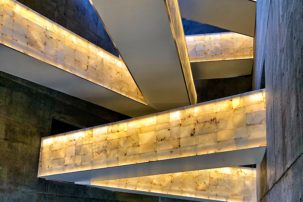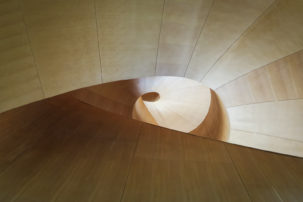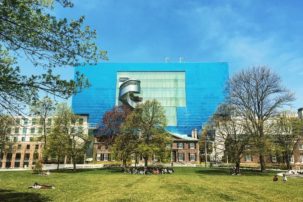With a big media splash, the Art Gallery of Ontario spread the word this morning that it was kicking off an unprecedented museum crowdfunding campaign. By 9 a.m. Eastern Time, the Globe and Mail, CBC, National Post and CTV News were all reporting the news: namely, that the AGO is hoping to raise $1.3 million in 30 days to purchase a new Infinity Mirror Room by Yayoi Kusama. (The AGO already has $1 million from an unnamed private donor, but needs to raise more than that amount from the public in order to secure the art for $2.3 million in total price.)
“There are millions of lights, dots or globes within Kusama’s art,” AGO director and CEO Stephan Jost tells Canadian Art, emphasizing parallels of connectivity between the art and the crowdfunding campaign. “She is always expanding her universe. I love the idea that there will be thousands of people contributing” to the acquisition, Jost says. “I think it’s a nice opportunity to be part of something that is big and positive.”
But the need to crowdsource funding also speaks to financial pressures currently affecting museums in general and Ontario cultural institutions in particular. It also raises the question of how much museums are redirecting their funding onuses back upon the publics they are ostensibly supposed to serve.
The AGO is likely to meet its $1.3 million goal easily, given that 165,000 people turned out to its very popular Kusama exhibition earlier this year, and each of those attendees would only have to chip in $10 or less for the AGO to meet its target. To boot, the AGO has lined up a variety of smart donor incentives: donors at the $25 level will have a chance to see the Infinity Mirror Room in person before it opens to the general public. Donors in the first five days of the campaign will be entered into a contest for a sleepover at the AGO with five friends, including early access to (though not slumbering in!) the Infinity Mirror Room. Donors at the $100 or more level will receive a tax receipt. And as funds are raised, the AGO will unveil pieces of a photo of the Infinity Mirror Room that is to be acquired.
But in many ways, the Infinity Room acquisition is just the short game. The long game can be read as an effort to cultivate and start generational relationships with younger, newer donors and patrons at a time when what CIBC calls “the country’s largest-ever transfer of wealth” is imminent.
“I believe welcoming participation at all levels and all forms is a good thing for us,” says Jost. “The example I give is the Tintoretto we bought in 1958, [Christ Washing His Disciples’ Feet c. 1545–55]. You could buy a square inch for 10 bucks. The number of people involved with the gallery who have told me, ‘Oh, my grandma helped buy that’….And one of the people who bought a square inch was Michael Koerner. It was his first donation.” Koerner has since become a major donor, delivering at least $10-million in support to the AGO, becoming an AGO trustee emeritus and even sponsoring Jost’s own directorship position.
“I don’t know which 23-year-old out there who gives us 10 bucks for the Kusama will eventually be on our board,” says Jost. “But I think there will be some.”

 Yayoi Kusama, Infinity Mirror Room—Phalli’s Field, 1965. Installation view at the Hirshhorn Museum and Sculpture Garden, 2017. Sewn stuffed cotton fabric, board, and mirrors. Courtesy of Ota Fine Arts,Tokyo/Singapore; Victoria Miro, London; David Zwirner, New York. Photo: Cathy Carver.
Yayoi Kusama, Infinity Mirror Room—Phalli’s Field, 1965. Installation view at the Hirshhorn Museum and Sculpture Garden, 2017. Sewn stuffed cotton fabric, board, and mirrors. Courtesy of Ota Fine Arts,Tokyo/Singapore; Victoria Miro, London; David Zwirner, New York. Photo: Cathy Carver.







